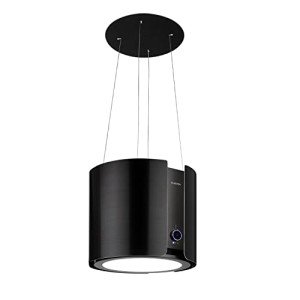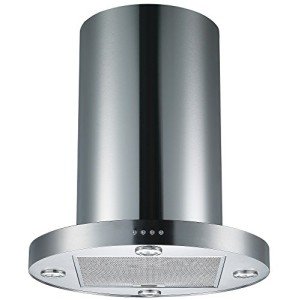A Look At Over Island Extractor Fan's Secrets Of Over Island Extr…
페이지 정보
작성자 Elliott 날짜25-02-23 22:14 조회2회 댓글0건본문
 Choosing an Over Island Extractor Fan
Choosing an Over Island Extractor Fan As we continue to embrace open-plan living, kitchen island extractor fans have ended up being a crucial design function in numerous homes. They remove moisture, odours, heat and smoke - keeping large open cooking areas clean and smelling fresh.
As we continue to embrace open-plan living, kitchen island extractor fans have ended up being a crucial design function in numerous homes. They remove moisture, odours, heat and smoke - keeping large open cooking areas clean and smelling fresh.They work by pulling air up into a vent package, which is either pressed outside through an external wall or cleansed by charcoal filters before being required back into the kitchen. Flush fitting extractor fan for island hob hoods are a more trendy option as they sit flush to the ceiling.
Downdraft extractors
Among the most popular designs with our clients, downdraft extractors are built into your kitchen counter top negating the requirement for overhead cooker hoods. They work in the very same method as an island range hood extractor, drawing steam, smells and smoke downwards into a duct which then filters and vents them outside, however they are developed to be invisible when not in use.
They sit flush with the counter top, just rising when activated to draw away steam, smells and smoke at source, before tucking nicely back below for a clean, elegant surface. They're excellent for modern-day kitchen styles where the extractor hood would otherwise interfere with the streamlined style of your counter tops and cabinets.
For our full range hoods for islands of downdraft cooker hoods, click here.
These creative ventilation systems been available in a series of designs from wall-mounted to traditional island hoods, as well as downdraft ventilation concealed inside kitchen systems. All offer effective extraction rates and a discreet appearance which mixes in with your design visual. They can likewise be recirculated for the ecologically conscious.
Unlike standard extractor hoods which are usually positioned above your hob for ease of setup, these models are constructed into your kitchen counter top, indicating they can be installed anywhere within a safe range of the back of your stove. This is perfect for those who don't wish to sacrifice area on the back of their countertops or for those with greater ceilings where an overhead extraction fan may not be practical.
They can be vented to the outside or recirculated, although venting to the outdoors needs an additional package of pipelines which can contribute to your overall build expenses. You will likewise need a space in your cabinets or void under the counter top for the system and motor to fit, which might minimize storage capacity or create customized cabinets services.
A pop-up extractor hood can be used in new builds or remodellings, where there's enough room for a 5inch drainage pipeline to be run from an external wall and to the hood. They are an excellent choice for open-plan cooking areas and dining areas where you wish to keep your design as uncluttered as possible while still keeping a hygienic cooking area.
Ceiling extractors
If you're looking for a smooth, effective method to keep your kitchen and other spaces well-ventilated without jeopardizing on space or design, island extractors a ceiling extractor fan is the best service. These models are created to sit flush with the ceiling above a built-in hob and generally feature remote control performance in addition to dimmable lighting for included benefit. They're also readily available in a range of styles and colours to match your décor, along with designs with innovative features like run-on timers to assist you save energy.
There are 2 main types of ceiling extractor fans: ducted and recirculating. Ducted designs are vented to the outdoors through the gaps in your ceiling joists and can be exceptionally efficient at pulling steam, cooking smells and grease far from your kitchen, leaving the air tidy and fresh. However, they're not a great choice for homes with low ceilings or if you're planning to set up a chimney cooker hood above your island.
A recirculating ceiling extractor works in a different way as it does not have a vent at the back and rather uses filters to purify the air before recirculating it into your home. These models are more flexible and can be utilized throughout your home, however they may not be as effective as a ducted extractor.
The Novy EV90BL ceiling extractor hood has a trendy design and a flush fitting surface to seamlessly blend into your ceiling for a smooth, unbroken kitchen appearance. It's also loaded with helpful functions to make your life simpler, consisting of LED strip lighting that can be controlled by means of the extractor hood, InTouch on your compatible hob or the Novy app.
An island chimney cooker hood is another popular option for extractor fans, as it uses the very best performance and a spectacular design to match your island hob. These designs have a flue at the back that sucks in cooking odours, steam and grease before pushing them out of your home through an external wall or venting them into the environment. They're not the most effective option if you prepare to keep your kitchen and dining space open-plan, however they can create an appealing break between the areas.
Non-vented extractors
When picking an extractor for your kitchen there are a number of various choices offered. Whether you desire something elegant and captivating or more structured, you're able to choose from a range of styles that suit any kitchen style or design. These include island extractor fans and ceiling extractors, allowing you to ventilate your kitchen without jeopardizing on design or aesthetic.
The ventilation system you select will depend upon the kind of hob and kitchen layout that you have. Island extractors hang directly from the ceiling above your hob, providing an attractive and practical focal point in any kitchen. They get rid of moisture, odours, smoke and heat by pulling particulates from the air in your kitchen.
They are a great choice if you have an open-plan kitchen and dining area, as they serve as a break in between the two spaces whilst still using a lot of area for cooking and cleaning. Nevertheless, they are not suitable for all cooking areas and it's finest to check that the area can accommodate the fan before installing one.
A flush fitting extractor hood is perfect for those who do not wish to have the ducting on show and it's a great alternative to a standard wall-mounted cooker hood. They work by pulling air upwards and it's either pressed through a vent package to the nearest external wall and expelled outdoors or recirculated through charcoal filters to cleanse it before being pumped back into your kitchen-- eliminating the need for venting out.
Whether you're going for a vented or non-vented extraction system, you will need to have a filter that needs routine replacement. Depending on the model and frequency of use, you can expect to replace the filter every 3 to 6 months.
Ventilation is necessary in any kitchen no matter which design of cooking you do. Steam, grease and smells occur regardless of whether you're boiling water or baking bread, so having an efficient ventilation system is essential to avoid them from building up in your house. In addition, it's a legal requirement that all kitchen areas are aerated to minimize the risk of fires and mould.
Sound
If you are experiencing excessive noise from your extractor fan, first check your owner's handbook to see if your design can be lubed. If it does, you can use the proper lubricant to the motor bearings and test once again. If the noise persists, try turning the fan on and off once again to reset the electronic circuit. If this doesn't solve the issue, contact Hoover consumer support to arrange a service technician visit.
You might also desire to examine the stability of your ducting. Any bends, kinks or loose fittings can increase sound levels.
댓글목록
등록된 댓글이 없습니다.



















 광송무역
광송무역
 070-7762-8494
070-7762-8494

